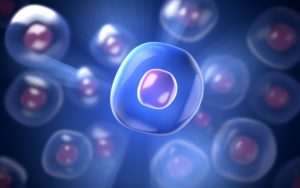Home » What To Expect? » Stem Cell Myths and Facts
Stem Cell Myths and Facts
When it comes to Regenerative Medicine, there is still a lot of doubt and uncertainty around stem cells.
What are stem cells?
According to the Mayo Clinic, stem cells are the master cells of the body. These master cells decide what type of functions the cell will have. Whether it’s the body or under laboratory conditions, these cells can divide and create more cells, also referred to as daughter cells. These daughter cells either become new stem cells (self-renewal) or become specialized cells (differentiation) with a specific function. Differentiation simply means that the cell will become a specific cell like a blood cell, brain cell, heart muscle cell, or bone cell. Stem cells are the only cells in the human body that have the ability to naturally become another cell or to generate new cell types. Blood cells can create new blood cells, skin cells can create new skin cells, but only stem cells have the potential to become another type of cell. This is what makes them so interesting to scientists and doctors because stem cells have the potential to help so medical issues and conditions.
There is already an immense amount of research behind stem cells and much more is continuing to happen all over the world. Some of the common myths and facts are broken down here for you to better understand stem cells.


Myths and Facts
Myth: It’s unethical.
Fact: This is less of a myth and fact, but more of an ethical dilemma. The debate on the use of stem cells began in 1998 when the first proposals on stem cell research had appeared. This led to governmental bodies from all over the globe drafting guidelines and regulations around the research and use of stem cells between 2000 – 2001. In 2001 the United States began to allow for federal funds to be used to study embryonic stem cells, with specific rules and regulations stating that the funds were not to be used to destroy an embryo. There are other ways to harvest stem cells that do NOT involve an embryo at all, which leads to our next myth and fact.
Myth: Stem cells come from babies.
Fact: Stem cells are found in embryos, yes. However, stem cell research has proven that there are a number of ways to harvest stem cells that do not require any embryo to be directly impacted or even necessary. One of the most commonly known processed is through bone marrow, which contains blood stem cells (hematopoietic stem cells, HSC). This is a more painful way to harvest healthy cells, but it has been used for bone marrow transplants and to treat blood conditions. Bone marrow is the spongy, fatty tissue found inside your bones which creates red blood cells (which carry oxygen and nutrients throughout the body), white blood cells (which fight infection), and platelets (which are responsible for the formation of clots).
There are other less-invasive ways to harvest stem cells. Stem cells derived from cord blood comes from the umbilical cord or amniotic fluid during childbirth. The baby’s umbilical cord is rich with blood stem cells, or hematopoietic stem cells. An umbilical cord is typically discarded as medical waste, although cord blood can be used to treat a large number of ailments. Scientists have started to utilize these stem cells to avoid the necessity of using embryonic stem cells at all to achieve the same results, but by using the stem cells derived from umbilical cord, placenta, and amniotic fluid.
Myth: Human beings shouldn’t be “playing God”.
Fact: Plenty of religious and non-religious beliefs are that the creation of human tissues through stem cells is immoral. This belief is one that begins and ends with the concept of is it humanly acceptable to create or clone life, in any form. Whether it is through stem cells grown in a lab or cloning a person, this theological concern is one that may never be resolved. When it comes to the medical innovation being stem cell research, it is not about cloning or creating a whole being, but it is aimed to replicate cells. Stem cells cannot grow into an organism, so it really gears away from the fear of cloning a human being. Stem cells are currently being used to focus on a specific part of the body that needs to be replaced through healthy tissue, organ, or blood transplantation.
Myth: Stem cells are a cure.
Fact: Stem cells have the potential to cure medical ailments and conditions. This is because stem cells are NOT a cure in themselves although they can help the body to regenerate what it does need to heal itself. Stem cells do have the potential to aid in the therapeutic enhancement of various medical issues because of their ability to change through differentiation.
Through studying stem cells, scientists can learn how these specific cells can grow and develop into other cells that are necessary for the body to function properly or to repair itself. What this means is that a stem cell can change into the type of cell necessary to a specific part of the body. If a stem cell was among skin cells and there was a need for new skin cells in that area, the stem cells could become skin cells to help the body to perform normal functions. This happens in our bodies every day, even as adults. We all have stem cells throughout our bodies and they work as they are needed to, and this occurs naturally throughout the body.
Northeast Knee and Joint Institute
At Northeast Knee and Joint Institute, we offer stem cell therapy along with other regenerative medicine treatment options at our Williamsport office locations. If you are interested in learning more, simply call our office to schedule a consultation to see if stem cell therapy is the best treatment option for you!

